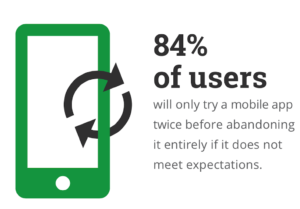I took the above title from a recent article in Forbes and it’s true. Most people haven’t heard of NGINX, but in fact they most likely use it every day, if not every hour, they’re on the Internet. NGINX underpins the everyday life of nearly everyone connected to the web, whether they’re reserving a room through Airbnb, booking a ride on Uber to get to a meeting, uploading a photo to Instagram to share with their friends, buying their favorite items online at Zappos, or watching a movie at home on Netflix.
 Only a few years ago, websites were mostly digital brochures, but that’s not the case today. Modern websites are interactive applications offering a huge range of services: storing your personal information (such as account balance, credit card info, and home address), delivering software as a service to help you run and grow your business, selling you every possible kind of product using sophisticated inventory and shopping cart interfaces, and streaming digital content such as movies to your phone. They’re fast, secure, and available 100% of the time. They work in browsers and mobile devices, and also connect to other computers and devices on the Internet of Things (IoT), such as health trackers and GPS devices.
Only a few years ago, websites were mostly digital brochures, but that’s not the case today. Modern websites are interactive applications offering a huge range of services: storing your personal information (such as account balance, credit card info, and home address), delivering software as a service to help you run and grow your business, selling you every possible kind of product using sophisticated inventory and shopping cart interfaces, and streaming digital content such as movies to your phone. They’re fast, secure, and available 100% of the time. They work in browsers and mobile devices, and also connect to other computers and devices on the Internet of Things (IoT), such as health trackers and GPS devices.

 Building and delivering apps with the performance that today’s users expect is much more complex than it was ten, or even five, years ago. This complexity has arisen from the need to develop apps differently so they can run on the cloud and interact with a range of devices including mobile phones and tablets. The complexity will only increase as cloud, mobility, and the IoT drive the creation of more apps and the addition of more devices connected to the Internet. In fact, Gartner predicts there will be as many as 25 billion devices by 2020, so application delivery is about to get really interesting.
Building and delivering apps with the performance that today’s users expect is much more complex than it was ten, or even five, years ago. This complexity has arisen from the need to develop apps differently so they can run on the cloud and interact with a range of devices including mobile phones and tablets. The complexity will only increase as cloud, mobility, and the IoT drive the creation of more apps and the addition of more devices connected to the Internet. In fact, Gartner predicts there will be as many as 25 billion devices by 2020, so application delivery is about to get really interesting.
Why is performance so important? It turns out that the speed at which an application is delivered is just as important as the application itself – a great application that’s delivered poorly is a bad application. Users won’t wait long for your application to load before they click away to find what they want elsewhere, and most of them will never come back. The reality is that you have just one, or at best two, chances to get someone using your app. Less than 16% of people try using an application more than twice.
At NGINX we take great pride in helping customers solve the complexities of building fast, scalable, and secure applications for the web and mobileenabled world. We’ve done this for 140 million websites, 42% of the busiest sites in the world, and many Fortune 100 companies as well. We look forward to helping you too.





